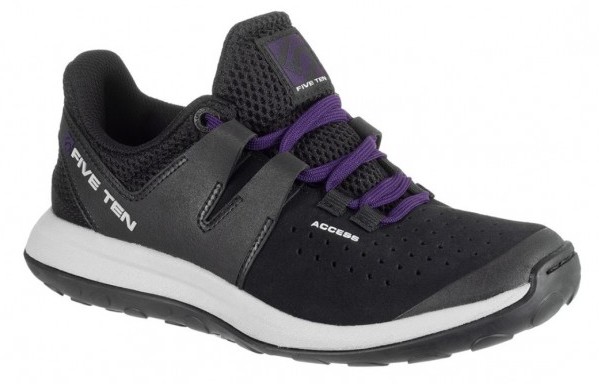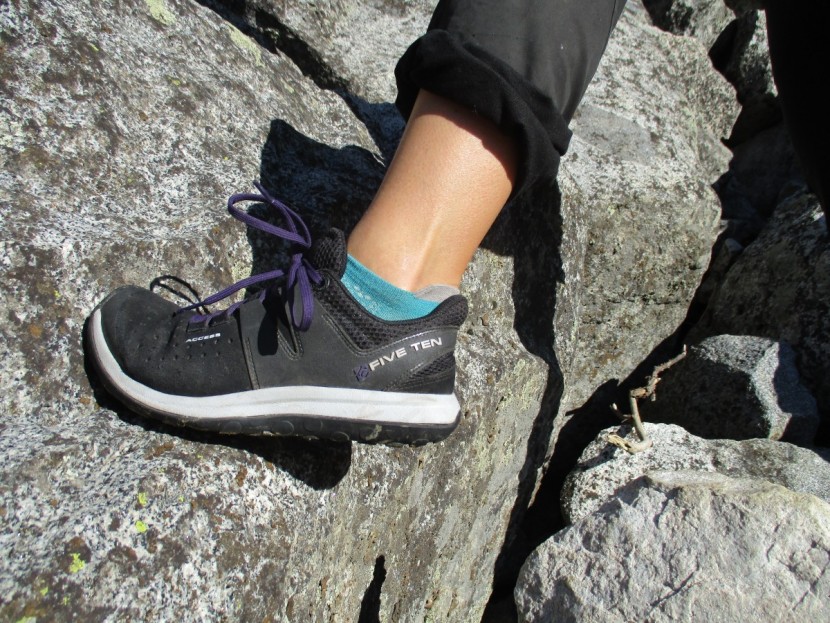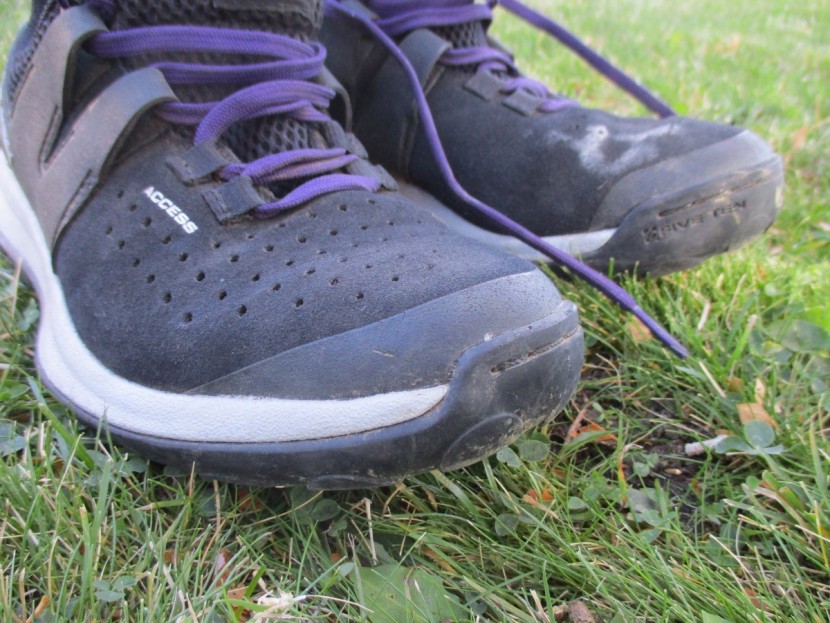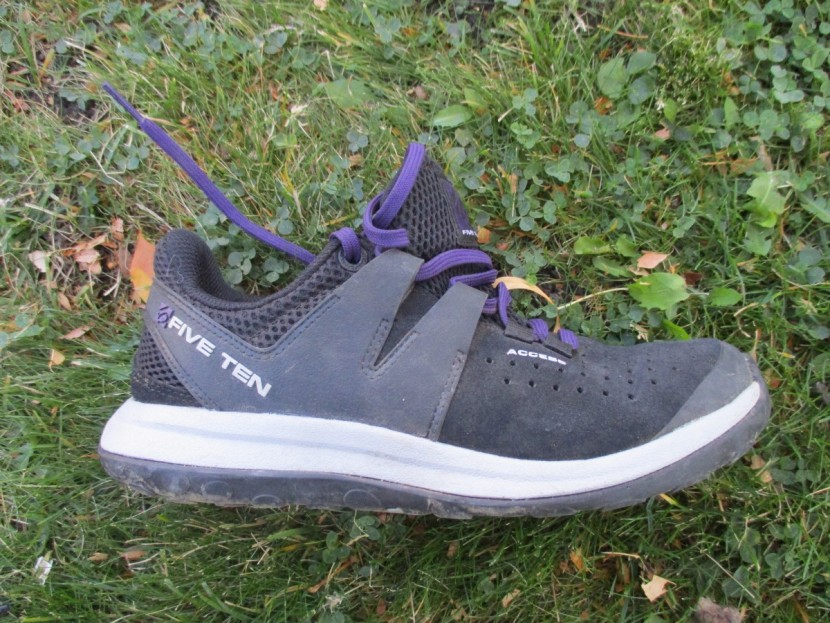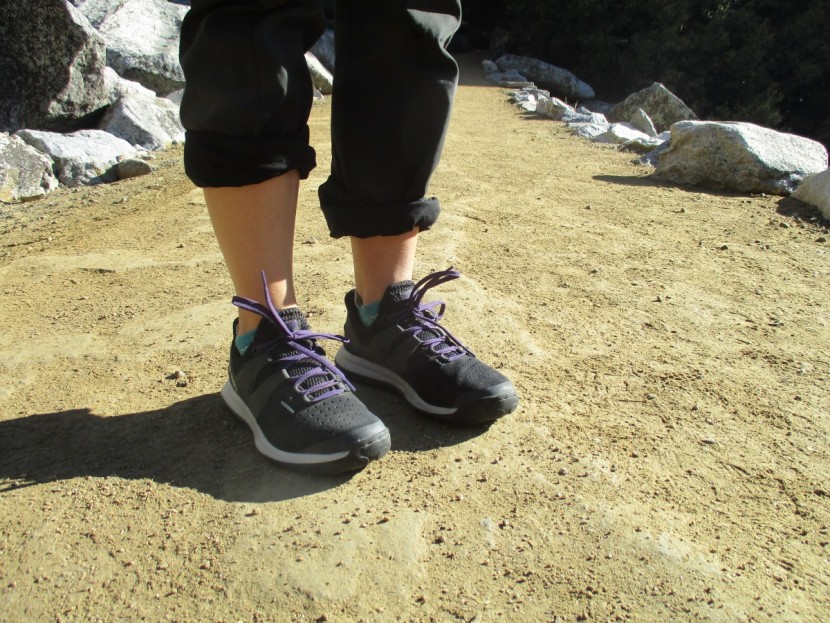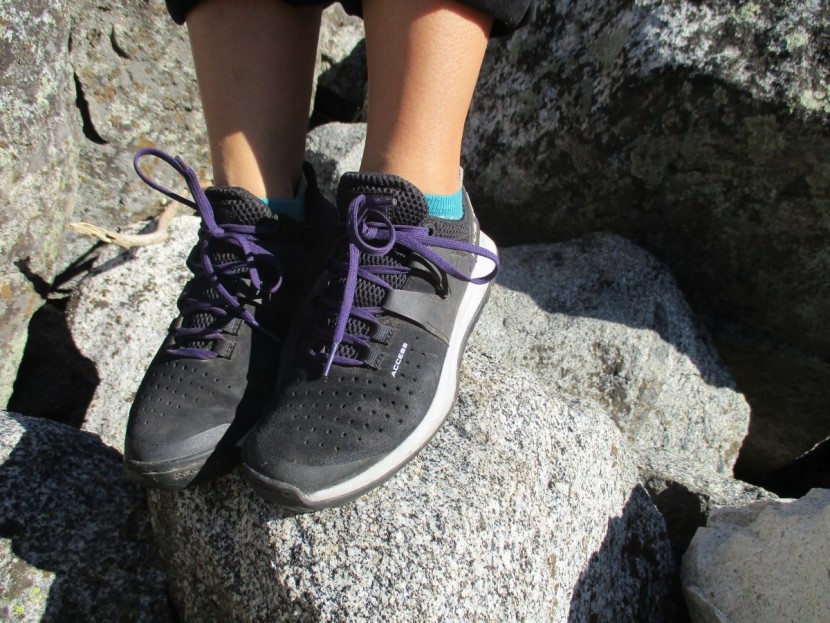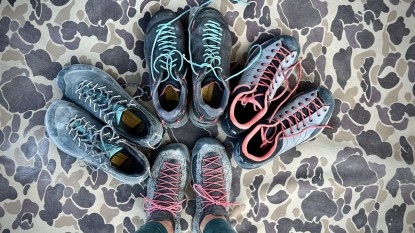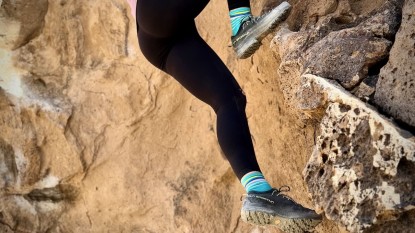Five Ten Access - Women's Review
Our Verdict
Our Analysis and Test Results
The Five Ten Access failed to impress our review team due to its poor climbing ability and less than stellar durability. Its high arch and underfoot support were appreciated by some, and we think this model makes a decent hiking and around-town shoe but an unacceptable climbing approach shoe.
Performance Comparison
Climbing Ability
The thing that sets approach shoes apart from hiking shoes is their sticky rubber and ability to carry their user over fourth and sometimes easy fifth class terrain. We smeared, edged, and jammed the Access up Tuolumne's Cathedral Peak and found it to be unreliable and downright scary.
Every approach shoe that we've ever seen, and seven out of the eight pairs in this review, have some sort of smooth edge up front. Usually called the “climbing zone” or “edging zone,” this feature is instrumental in the usability of an approach shoe. By contrast, the rounded toe of the Access makes for terrible edging. Compared to its competitors, the Access's lack of distinguishable edge made face climbing nearly impossible. The photo below compares the Access to the Arc'teryx Acrux SL, whose great front climbing zone makes for a superior climbing ability.
We could smear some with the Access, but the laces don't reach far enough down the shoe to provide a snug fit. The lack of edge and the loose-fitting toe make for insecure climbing. The toe profile of the Access is narrow enough to fit into cracks nicely, but the overly wide heel prohibits us from choosing this as our first pick for crack climbing.
Comfort
With “support” receiving its own score, the factors we considered most heavily for this metric were midsole flexibility, materials, lacing, and upper cushioning. The Access was decently comfortable to walk in due to its breathable materials and cozy tongue, earning it the average score of 5/10 for comfort.
The Access's midsole is moderately stiff, and we generally enjoyed walking in this shoe. The materials are especially enjoyable. We loved the cushy tongue and heel which made the Access one of our go-to shoes for biking in Yosemite or walking around town. The tester's narrow feet really appreciated the snug midfoot of this shoe, and we found the leather upper to be cozy yet breathable.
Unfortunately, the lacing system of the Access is the least adjustable of any of the shoes in this review. Typically, approach shoes are tricked out with laces that reach far down the foot, nearly to the toes, in order to provide a snug fit for climbing. The Access's laces stop very high on the foot, and while comfortable for walking, contribute to the poor climbing ability, as described above.
Support
This metric covers all your long hike support needs, including arch and underfoot support as well as stability on uneven terrain and protection from the elements. The Access earned an average score of 5/10 in this category.
At first glance, our lead tester hated the strong arch support. However, walking in it for hours, she grew to appreciate it more and more and eventually found it to be excellently supportive. We gave this shoe to our friends to see how they reacted, and we generally found the same results. Buyer beware, though: the Access's snug midfoot fit and high arch support are different than any approach shoe fit we've ever tested and may or may not be right for you. If a standard fit is what you're looking for, you may be more pleased with the Editors' Choice Award-winning La Sportiva TX2 or the majorly supportive La Sportiva Boulder X.
While a nice walking and hiking shoe, the Access would not be our pick for a long day in the alpine. It failed miserably on snow, from kicking steps to glissading, and its protection from the elements was nothing to write home about.
Weight
Like with almost all our outdoor gear, we like to shave ounces whenever possible. With approach shoes, we know that weight will often come at a sacrifice to comfort and support. The Access weighed in at 10.6 ounces (300 grams), placing it on the lower end of the eight pairs we tested.
One of the reasons that weight is so important for approach shoes is for carrying them on multi-pitch climbs. It should be noted that the Access lacks a clip loop on the heel, rendering them useless for multi-pitch routes. Their bulky tongue, while comfortable, also makes them harder to fit in backpacks than some other shoes in this review.
Durability
Climbing rubber doesn't last forever, but for this category, we looked to the materials of the upper as well as smaller details. The Access had slightly above average durability and earned a 6/10 for this category.
The leather upper boosted the score of this otherwise flimsy shoe. The sole is soft, and the Five Ten S1 rubber used on the Access is softer than the C4 found on the Five Ten Guide Tennie.
Because this shoe is more suited to easy approaches on nice trails than burly, alpine ascents, we imagine it could last you quite a while. If sport climbing trips to nearby crags are in your future, we wouldn't be surprised if the Access lasted you many seasons. However, if used on big walls or in the mountains, we have little hope that the Access would withstand your abuse.
Best Applications
Approach shoes are made with a variety of terrain in mind, yet we found the Access to be less than ideal for all of them. We wouldn't want to use them on any approach that required fourth or fifth class terrain due to their inferior climbing ability. Their weight would normally put them in the running for a useful approach shoe in places with easier approaches, like Squamish or Yosemite, but the lack of clip loop makes this less appealing. For easy approaches to the sport cliff or bouldering area, the Access would be an acceptable, comfortable option. Overall, however, it's difficult for our testers to find the appropriate usage for this shoe when there are so many better products on the market.
Value
At $140, the Five Ten Access falls in the top end of the price range for this review. We feel that this price is entirely too much for a shoe that is moderately comfortable yet impossible to climb in. For a multi-pitch shoe, we could easily recommend the much less expensive Evolv Cruzer Psyche or, for a hiking-focused shoe, the $120 Boulder X.
Conclusion
The Five Ten Access failed to win an award from our editors because of its faulty climbing ability and lack of useful features, like a functional lacing system or clip loop. While we found it to be a decently comfortable shoe, it generally missed the mark as an approach shoe.


